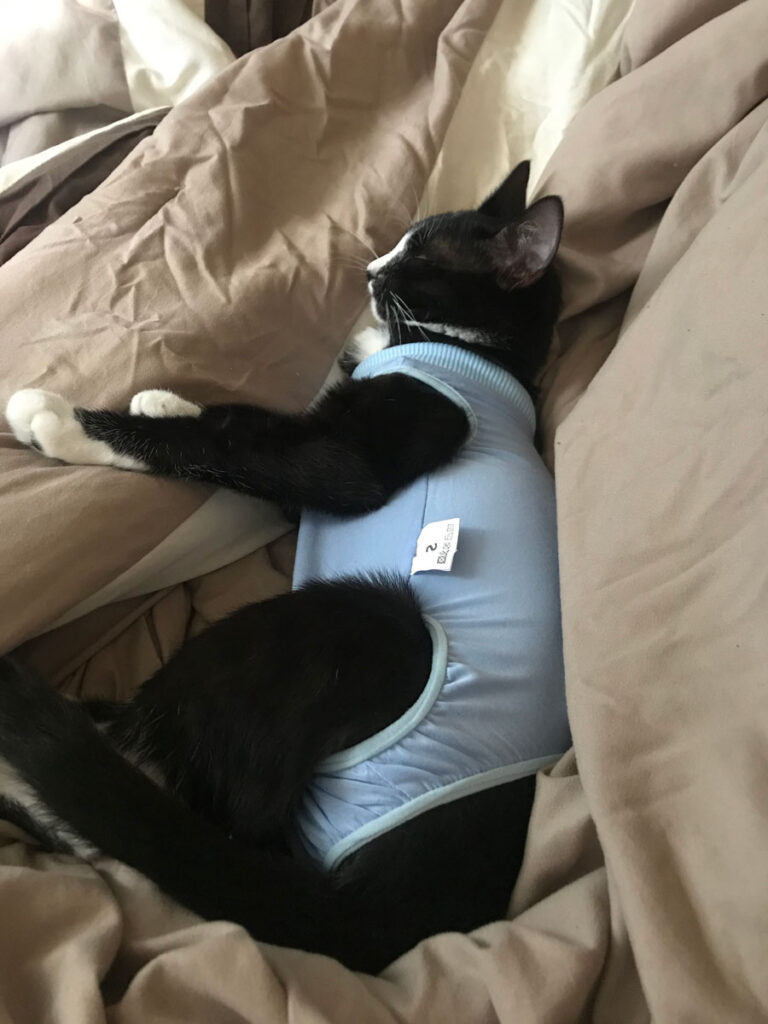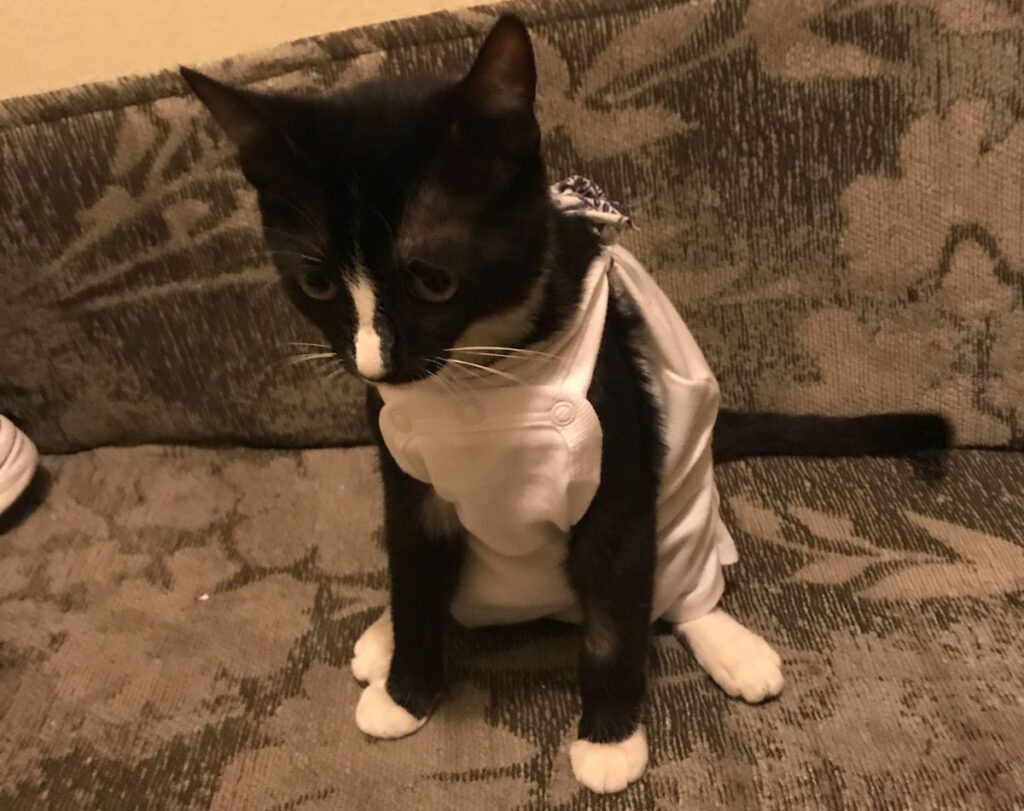Navigating kitty life and tips to be ready when they need to get sterilized
To begin, I feel I should clarify that I am a dog person, meaning I’ve only had dogs throughout my adult life, but I love all animals. During the pandemic, I found an abandoned newborn kitten in a neighborhood parking lot and decided to rescue her and call her my own. I bottle fed her, not so cleverly, named her Rona (for my version of a coronavirus baby) and fell in love with her.
Fast forward to a 5 month old Rona and my surprise when the vet tells me its time to have her spayed. I was told there are many benefits to spaying, with the obvious one to prevent unwanted litters, but also for preventative health reasons, like that of uterine infections and breast cancer in cats.
There are 3 stages during which a cat can be spayed, yet there also seems to be no real consensus on the “best time” for the sterilization. Some vets lean towards early, while others recommend any time before reaching sexual maturity, yet opinions have varied greatly over the past several decades.
The first option is around 6-8 weeks of age and this is generally the route taken prior to an adoption from a shelter. A more standard age is around 5-6 months, which is the path I took. The last option is waiting until after your cat has its first heat, which can be anywhere usually between 8 and 12 months.
Expect the Unexpected with this Procedure
I had spayed and neutered my two dogs over 10 years ago and recalled it being a fairly simple, harmless experience for both myself and my pups at the time. Below, a recounting of my personal experience and reminder that a spay is a major surgical procedure and female cats are very very different than dogs (I know, obvious).
The sterilization process was actually very fast, with the surgery taking no longer than 15-20 minutes, the longest part of the vet visit, as I was told would be the case ahead of time, was the pre-surgery bloodwork and putting your cat under general anesthesia. I had a morning appointment and was told I could pick her up later in the afternoon (as they monitor her after surgery to make sure she’s okay after being put under).
The veterinarian sent me home with 2 doses of pain medication, a plastic e-collar (the cone that is placed around your pet’s head) and a small dosage of a sedative. I was told, she would be a little disoriented and not look or act like herself for 1-2 days, I was to limit any playing or jumping, and that the cone should stay on no matter what to prevent licking and infections. The clinic also advised that her healing could take up to a total of 10-14 days.
What I had to learn myself, and the hard way
I know every cat, like people, are different, each with their own set of personality traits and quirks. For Rona, she does not liked to be handled unless it’s on her own terms.
She is a truly loving cat, but she wants to define when and how she will receive the cuddles and kisses. I’m all about consent, so it’s been a positive experience raising her.
However, this has also proven quite challenging when it comes to vet visits and getting shots, and bloodwork and of course, having to be handled. The vet technicians have been patient and caring, yet they always tell me after a visit that she either bit or scratched at them badly. I was warned if she continues, she will have to be sedated prior to any future appointments. Sad.
Yes, she can also be quite rambunctious, however considering she is a 5 month old kitten, I think it’s normal. Yet I knew she would probably have a harder time being calm, quiet, and not being her energetic self, I also honestly wasn’t quite sure of what to expect when it came down to her spaying.
Why isn’t there more of a warning about the cone situation?!
After her spay, they gave me the e-collar/cone (they did not put it on at the vet because she was being aggressive). What I didn’t know is how incredibly hard it would be to put the cone on her head!
My dogs had cones and I remember them being thoroughly annoyed but nothing could have prepared me for what was to come. She thrashed around so badly and with any chance she could, she would desperately try (and sometimes succeed) to lick her wound.
I had to take a few breaks because I was so afraid she was going to rip her newly placed stitches. I was panicked, I didn’t wish to further traumatize her further. I decided to give her some sedation (.5 ml of Gabapentin) to help her calm down in order to put the cone on her.
After the medicine wore off a few hours later, she was right back to whipping her body around, presumably causing herself pain, as well as her using her Houdini-like skills to remove the cone.
Another thing I didn’t realize until after searching the web for research and support, was how common some of the same post-op complications I was experiencing with Rona actually were.
Her incision site did have visible inflammation along with some minor bleeding and discharge surrounding the wound. Luckily, her licking did not result in any infection or actual ripping open her stitches.
I knew the plastic cone was a no-go, so I set out the same day to get a more expensive and hopefully more comfortable fabric cone, one with more flexibility and less weight. I thought maybe the plastic/cheap cone they gave me was weighing her down. Nope.
While she did allow me to have the new fabric collar on her, now she refused to move once on. She would not eat, drink, go to the bathroom, nothing, she simply would put her face down with the cone and became frozen like a statue.
I thought it would pass, but 4 hours later – no movement. When it came down to nighttime, I have no idea what she did the very few hours I got to sleep. Yet each time I slept for, maybe, 2 hours, I would wake up to find her with the cone off and her licking her wound. She was a persistently intense little thing. After spending around $30 on the top of the line new collar, I took to the internet, again, for another alternative.

Cat recovery suit to the rescue (?)
I found a cat recovery suit. It looked like a cloth jumpsuit for the cat where the abdomen area around the incision site was covered (see above). I quickly ordered the suit for next day delivery. Another $30 for the suit, I figured this would be the ticket. After getting scratched up because she really didn’t like me touching her paws, I got the suit on. It lasted less than a day. I woke up instinctively in the middle of the night to find Rona had chewed off the velcro backing of the recovery suit and was licking her wound. What the heck now! It has only been 2-3 days and I had, based on the typical healing process time frame, another 10-11 days!

I also searched high and low for some other remedy to keep her from attacking her own healing area, and found other cat owners had made their own kind of recovery suit, since the cones I tried were also not an option, out of old t-shirts and also baby “onesies”.
Why didn’t anyone warn me that it was going to be such a challenge? I took to the store to buy a pack of plain 0-3 month old “onesies”. Finally, the snugness of the baby onesie arms and the snaps at the bottom proved to be the only way she couldn’t wiggle out of the suit. The next 2 days were a bit easier. The first few days, I felt like a sleepless mother, waking up every couple of hours to make sure Rona hadn’t gotten out of her cone and suit to lick her wound.
Success? Yes, but heed my mistakes and make life easier!
After around the end of the first week, my little kitty was starting to resemble her old quirky self. She was still not 100% as far as climbing and jumping, but there was a noticeable improvement.
Whether it can be boiled down the fact that I was a total amateur and unprepared, in my case, only after lots of digging was I able to find information on how to cope with the recovery process, after my cat’s spay. Had I known there was even a slight possibility that the cone, in the case of my high spirited little cat, was out of the question, and there were alternative options like a recovery suit, I could have purchased that ahead of time. Mentally preparing yourself along with having the proper supplies, based on your knowledge of your kitten or cat’s temperament, is ultimately what I would have loved to know beforehand. Hooray for hindsight!
Find books on Health, Wellness and Adventure and many other topics at our sister site: Cherrybooks on Bookshop.org
Informinx may receive a small commission based on any purchases made by following links from this page.
Comments
0 comments


















